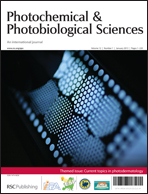The evolution of sunscreen products in the United States – a 12-year cross sectional study†
Abstract
Excessive exposure from ultraviolet (UV) radiation contributes to the development of skin cancers and photoaging. Topical sunscreen products remain one of the most widely used forms of protection for the majority of the public. The objective of this analysis was to examine photoprotection trends (e.g., SPF value) and the degree of UVA I protection from 1997 to 2009 in the United States. Sunscreen products purchased and evaluated in 1997 (N = 59), 2003 (N = 188) and again in 2009 (N = 330), totaling 577, were included in this analysis. Information regarding (1) the SPF value, (2) name and concentration of the active ingredients, (3) type of products (i.e., daily vs. recreational/beach), and (4) claims of UVA protection was recorded and analyzed. In addition, the critical wavelength (CW) of 330 products from 2009 was determined. The results showed an increase in the SPF values of products from 1997 to 2009. The percentage of low SPF products (SPF 4–14) decreased from 27% in 1997 to 6% in 2009. The number of products containing a known UVA-I filter (i.e.,

- This article is part of the themed collection: Current topics in photodermatology

 Please wait while we load your content...
Please wait while we load your content...